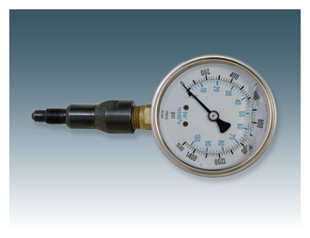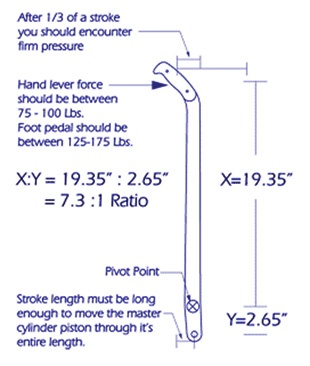Toll Free: 1-866-508-6394
OR Contact Us
OR Contact Us
Shop by Category
One of the most important yet often misunderstood elements of any racecar is the braking system. Racers employ a disc brake system, which is made up of calipers at each wheel, brake lines, a master cylinder and a brake pedal or lever. The key ingredient to any brake system is line pressure, which is a function of the master cylinder size and how much force is applied to the M/C via brake pedal or lever. It also determines the clamping force of the calipers. If the line pressure is too low, which is an all-too-common occurance, clamping force is reduced (much the same as putting a block under the brake pedal of your street car). The obvious consequence of this reduced clamping force is not being able to slow the car down quickly.  But this also leads to excessive heat being generated in the brake rotors —which can cause warping and/or cupping, creating a whole different set of problems. What is the proper system fluid volume (a door car with 4-piston calipers on all corners will require more than a dragster with only rear brakes) and how much line pressure should you have? M-W Enterprises recommends that at least 1200 psi system line pressure is available under severe braking conditions. And the master cylinder bore size (which determines how much fluid the piston can move) can be determined by using a special Brake System Pressure Calculator on this website. But this also leads to excessive heat being generated in the brake rotors —which can cause warping and/or cupping, creating a whole different set of problems. What is the proper system fluid volume (a door car with 4-piston calipers on all corners will require more than a dragster with only rear brakes) and how much line pressure should you have? M-W Enterprises recommends that at least 1200 psi system line pressure is available under severe braking conditions. And the master cylinder bore size (which determines how much fluid the piston can move) can be determined by using a special Brake System Pressure Calculator on this website.Now, how do you generate 1200 psi line pressure? This is a function of the force being applied to the push rod in the master cylinder. Because this force is greater than a human could apply directly to the M/C, a system of mechanical advantage (pedal or lever) is employed. The pedal ratio is determined by dividing the length of the pedal/lever to its pivot point, and from there to the attachment point of the linkage (see diagram). Using the interactive calculator on the website you can determine the ratio required to generate 1200 psi. Example: A dragster with two 4-piston calipers requires a 7/8" bore master cylinder, and minimum pedal ratio of 4.8 to 1 (7.3 to 1 for a lever, since you can’t generate as much force with your arm as you can with your leg). To verify line pressure, the most reliable method is to employ a gauge. M-W offers a premium grade liquid-filled gauge (p/n 81105) that can easily be attached to the caliper in place of a bleed screw in the caliper and measure pressure right where it counts.  Once sufficient brake line pressure can be obtained, it’s important to set the front/rear balance so that braking forces are applied commensurate to the capabilities of the disc/caliper (or drum) and weight transfer so one doesn’t “lock up” before the other. Once sufficient brake line pressure can be obtained, it’s important to set the front/rear balance so that braking forces are applied commensurate to the capabilities of the disc/caliper (or drum) and weight transfer so one doesn’t “lock up” before the other.Setting the proportioning valve will require some experimenting to get the proper balance. Also, if the master cylinder is mounted below an imaginary line connecting the front and rear calipers it is recommended to use an RPV (residual pressure valve) to help maintain line pressure. The most expensive brakes you can buy —even carbon fiber—cannot stop a car without having ample line pressure. It’s as simple as that. |